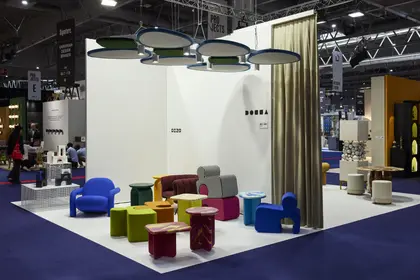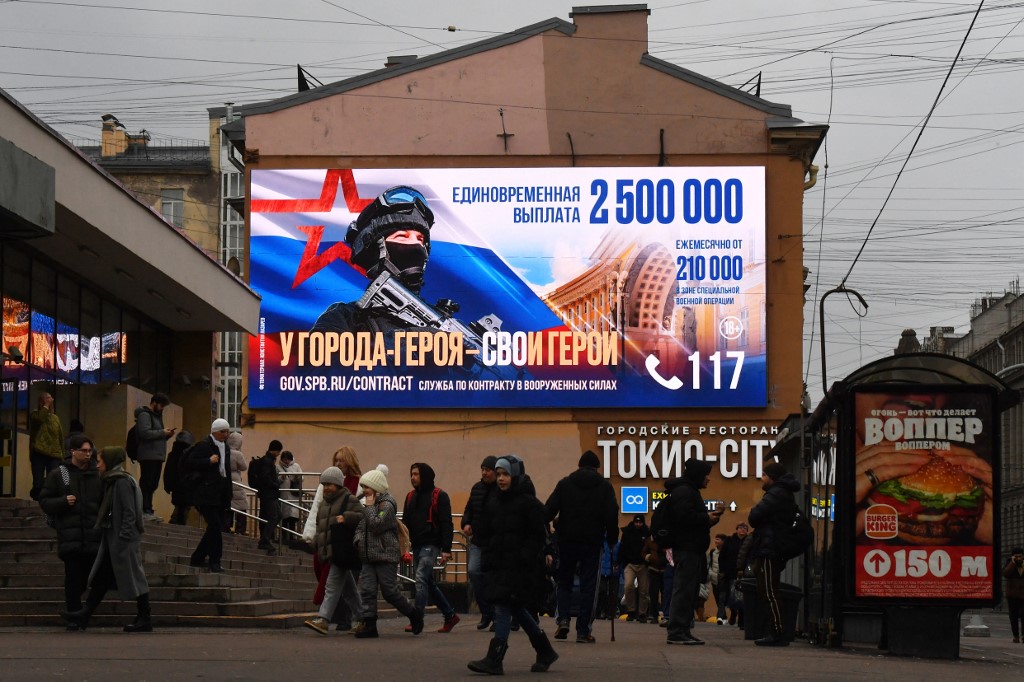Reflecting a general creative rebirth in Ukraine, the world of design is flourishing. The Ukrainian Design Brands project has been making inroads into the French market at the Maison&Objet exhibition in Paris. Kyiv Post spoke with curators Anastasia Biletska, creative director of Maino Design, and Sana Moreau, founder of the first gallery of Ukrainian design in Paris – Galerie Sana Moreau.
JOIN US ON TELEGRAM
Follow our coverage of the war on the @Kyivpost_official.
What are the main ideas behind the creation of the Ukrainian design exhibition at Maison&Objet in Paris, and how do you see it contributing to the global design community?
AB: Ukrainian Design Brands at the Maison&Objet exhibition has been around for five years. Not a long time, it may seem, but over these five years, a large open space has formed within the project, providing a clear path for creative furniture makers from Ukraine to engage with international partnerships and consumers. The project’s primary goal is the development of the Ukrainian design sector. Of course, the more Ukrainian brands enter the external market, the more noticeable their presence becomes, and accordingly – their influence. Over the past eight years, Ukrainian designers and brands have gone from being virtually invisible to finding themselves at the forefront of attention. In the last year and a half, there has also been significant interest in Ukrainian products due to the increased attention to Ukraine resulting from Russia’s invasion.

Germany – ‘Never Again!’ Becomes ‘Never Again Ignore!’ in Ukraine’s Case
SM: Without exaggeration, I can say that if earlier “Ukrainian design” as a concept was a singular phenomenon represented by a few names known to the most curious, now – partly thanks to these collective projects in Paris – Ukrainian design is becoming a full-fledged part of the global creative industry. There are many recognized Ukrainian names and brands worldwide, items that are visually well-known to professionals and enthusiasts. When we started this project, we ourselves did not realize how important it would turn out to be, but we intuitively felt it. However, we could not even imagine how much it would accelerate the evolution of Ukrainian design.
Tell us about the process of interaction and dialogue among the Ukrainian designers represented at the exhibition? Why do you always opt for the format of a collective stand?
AB: Collective projects have several significant advantages over individual presentations.
Firstly, there’s the cost aspect of the project. Depending on the booth size, the figure can reach tens of thousands of euros.
Secondly, there’s communication. Consumers often get lost, and the quality and consistent communication, trust in the contractor, determine how willing they are to spend their money on a Ukrainian young brand. The Ukrainian Design Brands project platform allows immediate involvement in a community that has trust in the market and expertise in selecting participants.
Thirdly, what we always try to do is give young companies the opportunity to showcase themselves at the level of already established and mature ones. It’s a kind of laboratory format – a very practical and rapid learning workshop, a necessary dialogue where participants, even if it sounds cliché, learn about partnership and collaboration.
S.M.: Additionally, this collective format allows us to expand coverage: every time we present 5 to 10 new collections, we surprise both experts and regular visitors of the Salon each time.
What do you see as the uniqueness of Ukrainian design, and which elements of culture and traditions do they successfully integrate into their creations?
AB: At present, it’s not hard to notice that the Ukrainian essence in products is a trend among manufacturers, not only in furniture, but also clothing, graphics, etc. This is understandable – it’s part of our struggle for identity. In many teams, the integration of elements from different historical periods of Ukrainian culture is expressed in a very aesthetic and attractive modern form. Also, the contemporary context finds artistic reflection in objects inspired by the current struggle against Russian aggression.
SM: Firstly, it’s the pure emotion present in every item created by our designers – whether it’s furniture or decor. The second characteristic is working with materials, especially natural ones – we are a very “tactile” nation. The third is the incredible ability to create refined objects, especially for designers who lean towards craft processing of materials and ceramicists, for example, which are unlike any style in the world, while preserving the molecules of our cultural DNA. The fourth characteristic is freedom and boldness, which also manifest in the search for new combinations of familiar materials, new techniques, and new forms.
It is precisely this unusual cocktail of circumstances and mental characteristics that allows us to anticipate the formation of a new phenomenon called "Ukrainian design."
How does Ukrainian design create a dialogue between different cultures represented at Maison&Objet? What role does design play in building bridges between different communities?
AB: Maison&Objet provides participants from different countries with the opportunity to showcase their products, find partners, and, of course, give a voice to the cultural component as well. Design (in our case, object and industrial design) is a very successful tool for communicating common denominators.
SM: Every Ukrainian project today is a manifesto of resilience, freedom, unbelievable ability, not only to literally survive in extremely challenging and dangerous conditions, but also to continue creating, being creative, and working.
Ukrainian design has undergone an incredibly rapid evolution. Paradoxically, the severity of the situation has provoked an even more powerful wave of creativity and vitality.
Design is becoming one of the promising directions for presenting Ukraine on the international stage because it serves as a link between creativity and the economy. This new language of cultural diplomacy is understood by Europeans and offers the prospect of commercial realization and monetization of Ukraine’s creative potential, where no one needs convincing anymore.
Today, Ukrainian designers amaze, spark interest, and even enthusiasm, not only with ideas but also with their quality, demonstrating both modern thinking and preserving the “cultural code.”
Is it possible, to predict the future through design? What trends and innovations presented at the exhibition can show the future of design and architecture?
AB: There are trends in the world that partially or entirely appeal to the current demands of the future, such as energy efficiency, environmental friendliness, locality, and geo-responsibility, overall embracing the theme of conscious production, a culture of caring for people and nature at all stages of creating a product.
What prospects in the field of design do you see for Ukraine in the near future? What innovations and directions can we expect from Ukrainian designers?
AB: It’s challenging to make generalized statements about innovations because Ukraine is currently a full-fledged laboratory of ideas. Everything depends on the ability to turn these ideas into products. At this stage, it seems to me that we have a sufficient material and production base. I would like to think about even more Ukrainian production units with a complete cycle of “created and made in Ukraine.”
How do you assess the impact of Ukrainian design on the international stage, and what steps are being taken for its further promotion?
AB: I assess the impact primarily by market share. If you open any global design magazine, in every fifth unit, you will find at least one from a Ukrainian manufacturer, craftsman, or ceramist. We want to be present everywhere and in a wide variety.
SM: In addition to projects at international salons, I have quite a bit of field experience. Two years ago, I took the plunge and opened a gallery of Ukrainian design in Paris – it was the first in Europe with such a narrow specialization at that time. Now, I have two galleries in different districts of Paris, catering to different audiences.
I’ll be honest—it’s very challenging, without exaggeration. From time to time, I feel like a desperate person who decided to cross the sea during a storm alone on a small boat without navigation experience. And mind you – without any investments or partners in France. However, I would never exchange this because this little screw helps move and shape the entire system called “Ukrainian design.” And this system is accelerating wildly.
You can also highlight the text and press Ctrl + Enter













